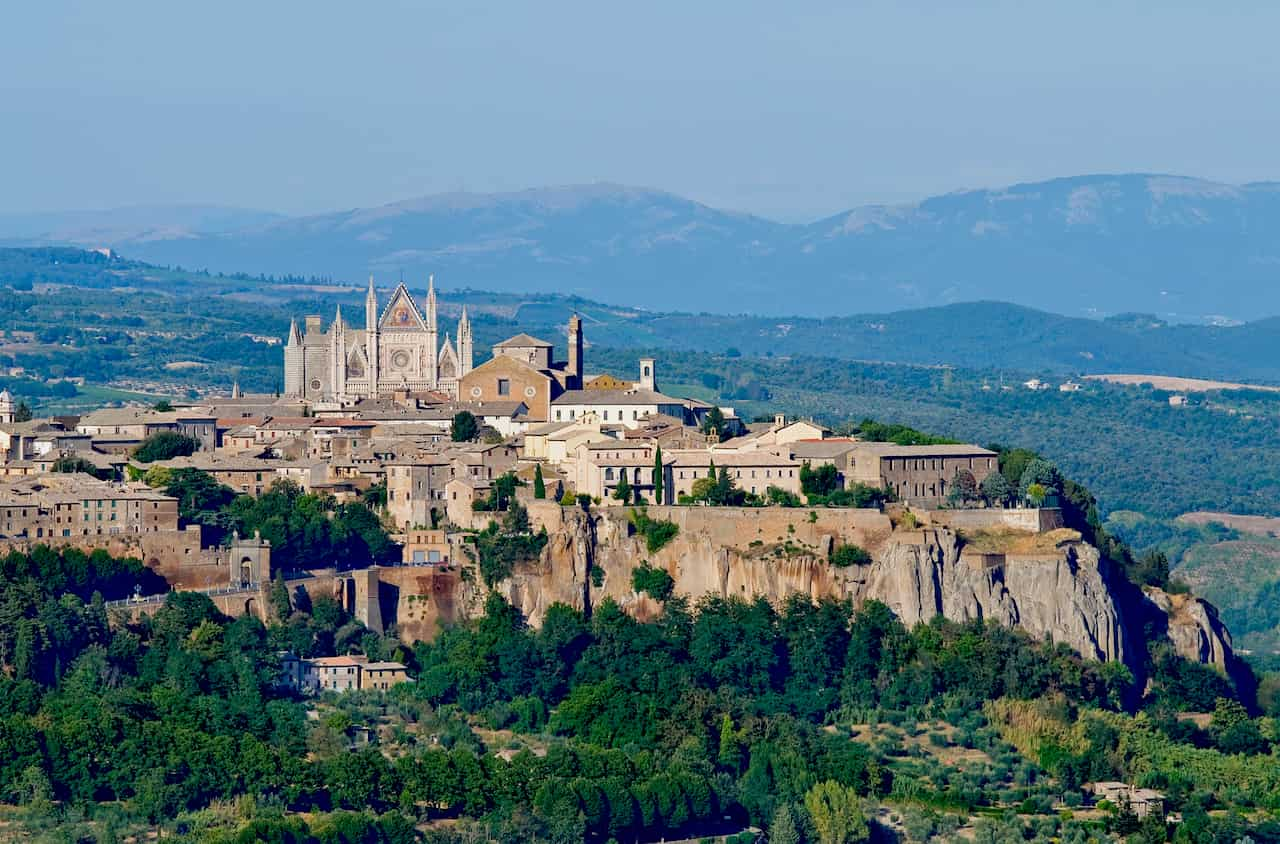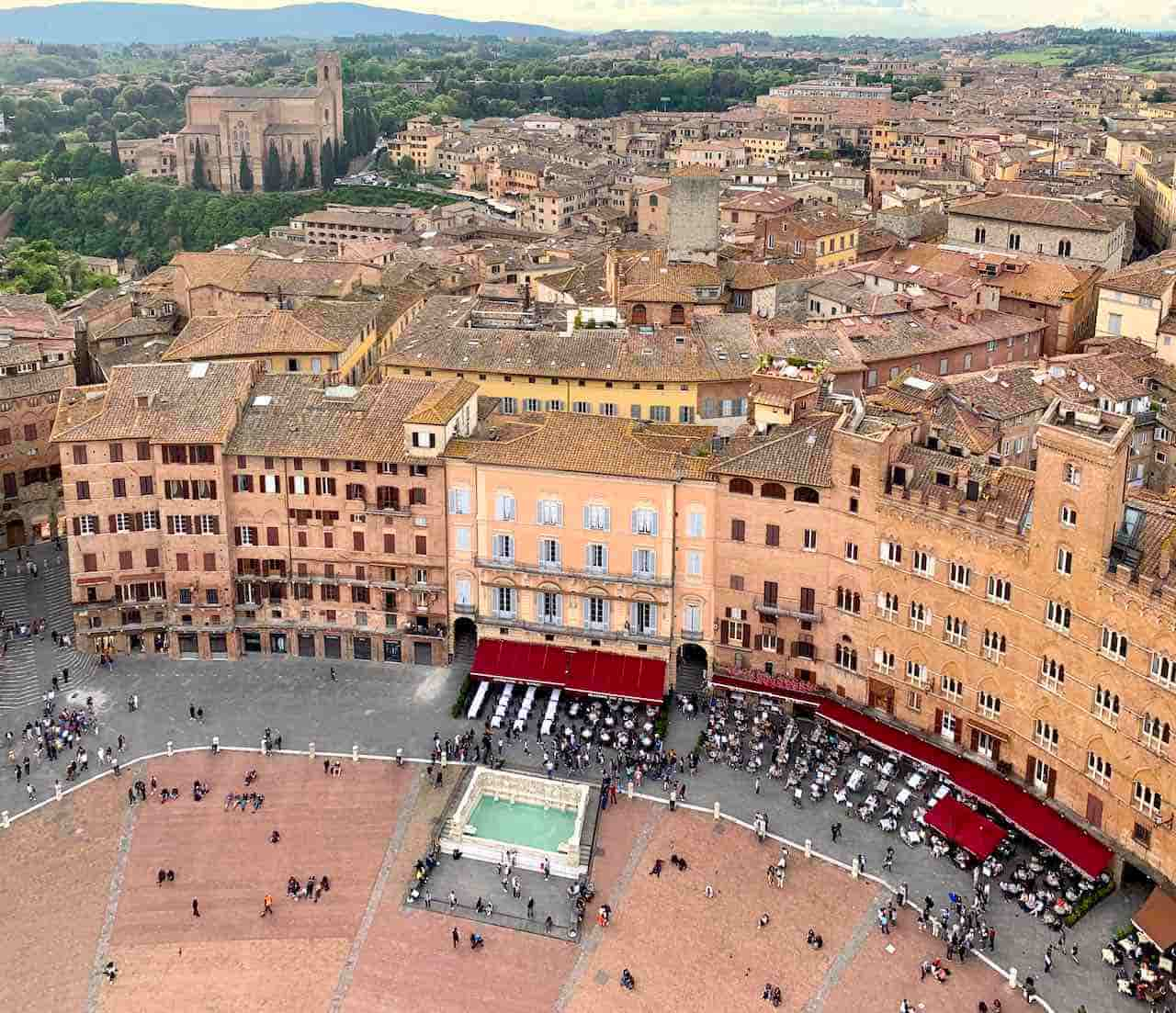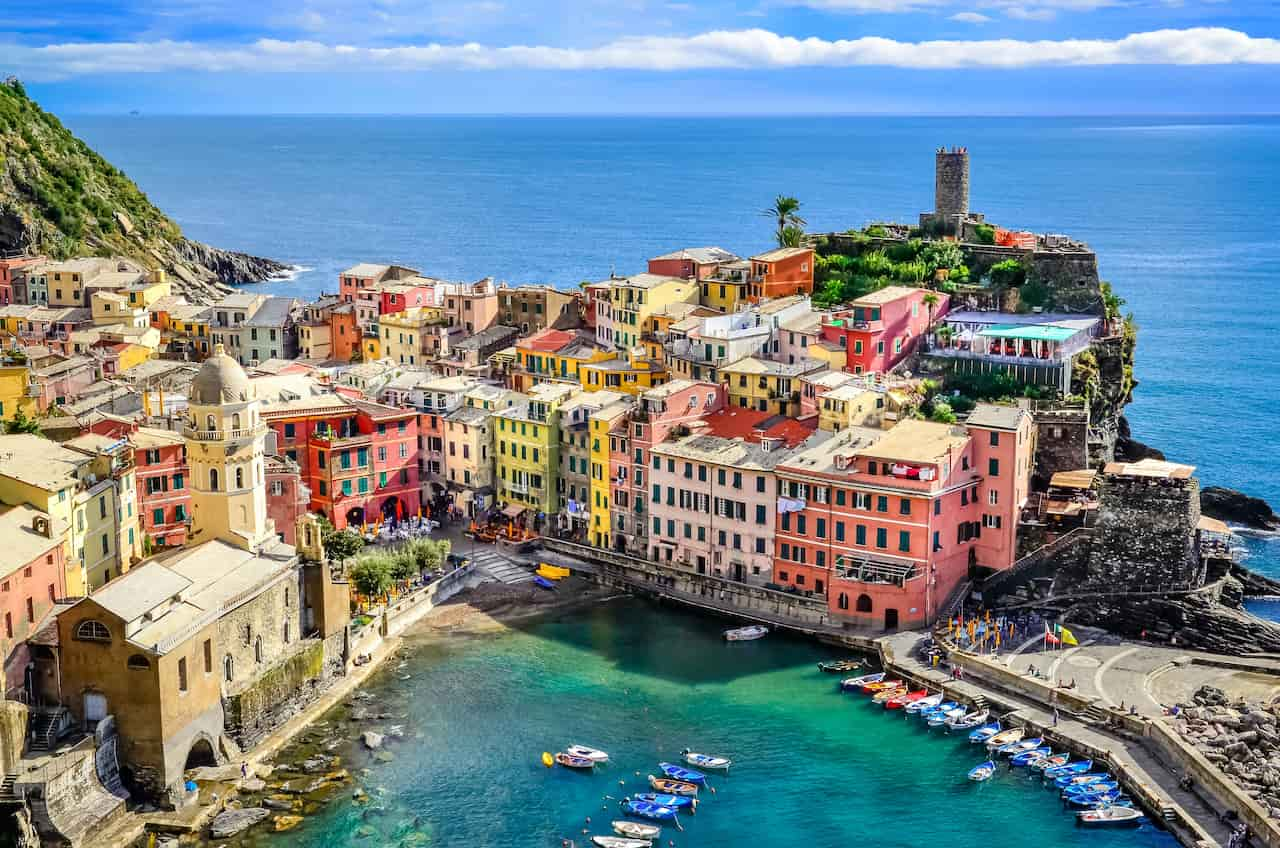Unlock the Secrets of the Valley of the Temples: A Curated Guide to Sicily’s Most Iconic Landmark!
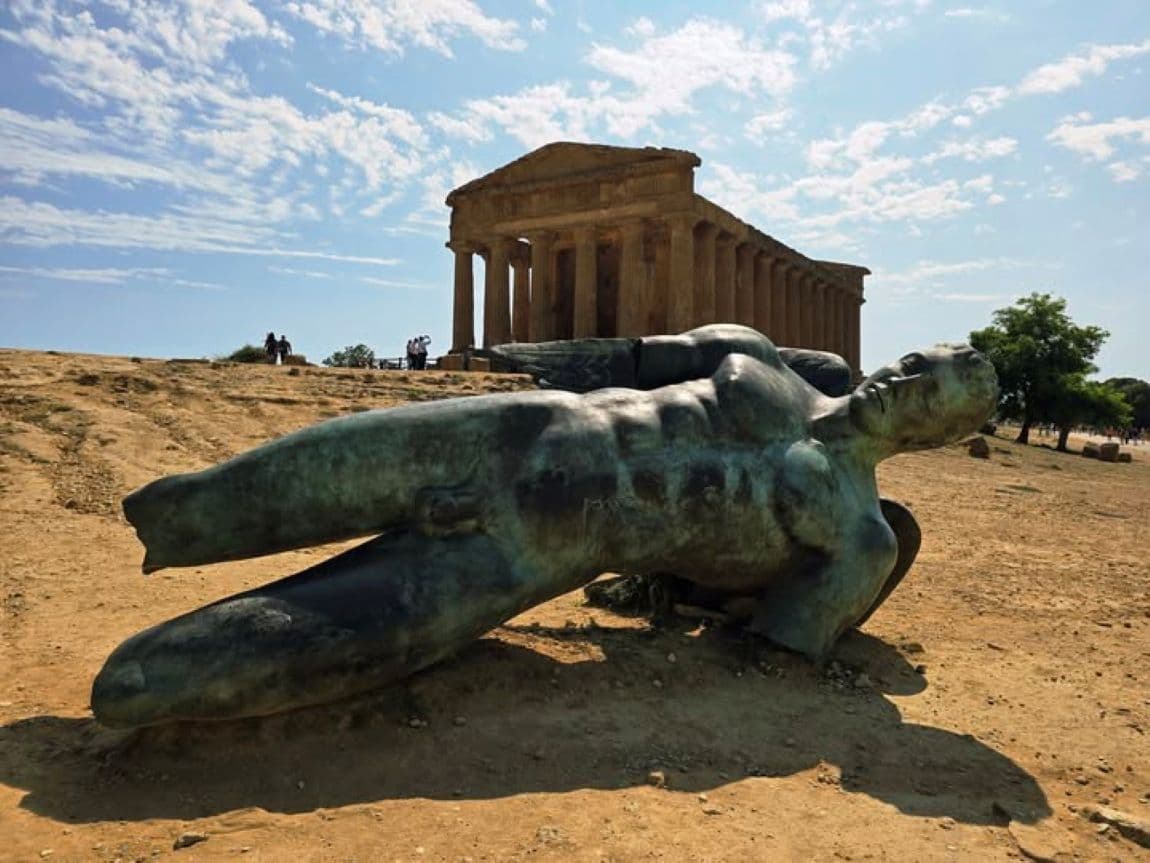
A Guide to Visiting the Valley of the Temples, Sicily!
Set on a sun-drenched ridge outside Agrigento, the Valley of the Temples is one of Sicily’s most awe-inspiring sights. This vast archaeological park, a UNESCO World Heritage Site, is home to some of the best-preserved Greek temples in the world—silent, majestic reminders of the ancient city of Akragas.
I visited the Valley of the Temples during a Sicily road trip, and it instantly became a highlight. There’s something unforgettable about walking among 2,500-year-old columns, with sea views on one side and olive groves on the other. The scale, serenity, and beauty of the site make it feel more like a sacred landscape than a museum.
The Valley of the Temples offers a unique and full immersion into the ancient world.
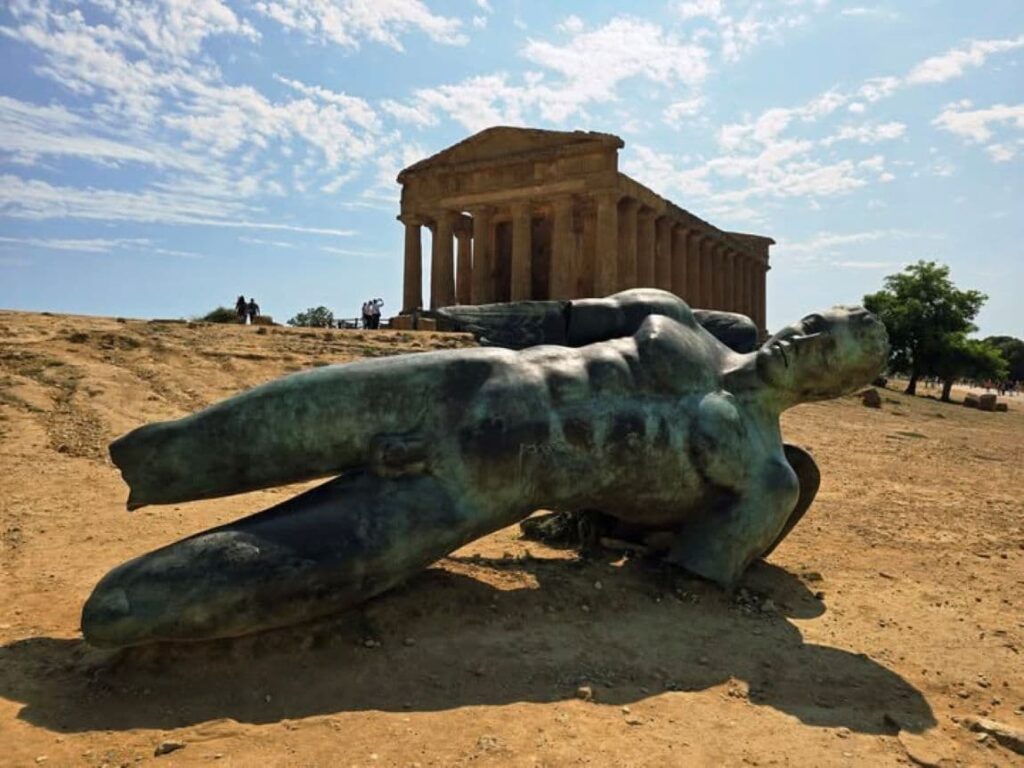
THIS POST MAY CONTAIN COMPENSATED LINKS. PLEASE READ MY DISCLAIMER FOR MORE INFO.
What is the Valley of the Temples?
The Valley of the Temples (Valle dei Templi) is a vast archaeological park located on the southern coast of Sicily. It’s home to some of the best-preserved Greek temples in the world, built about 2,500 years ago when this part of Sicily was the powerful Greek city of Akragas. Spread across a ridge (not really a valley!), the park includes monumental ruins, statues, necropolises, a villa, and peaceful gardens—all surrounded by olive trees and with sweeping views of the sea.
It’s no surprise that the Valley of the Temples is a UNESCO World Heritage Site. The grandeur here easily rivals more famous sites like the Acropolis in Athens or Paestum in mainland Italy, and in Sicily, it arguably outshines even the impressive ruins of Segesta and the sprawling site of Selinunte. While Selinunte is more remote and Segesta more compact, Agrigento offers a perfect combination of size, preservation, and accessibility.
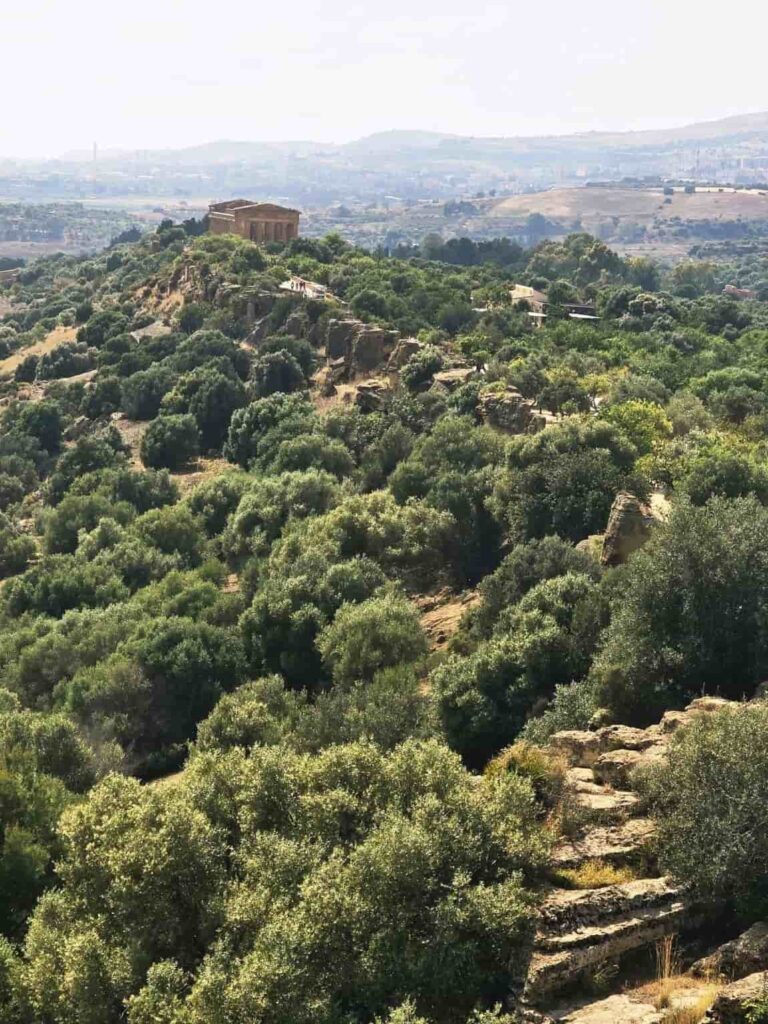
Why Visit the Valley of the Temples?
The Valley of the Temples is not just a bunch of old stones—these ancient Greek temples are colossal, beautiful, and astonishingly intact in places. You can stand beneath towering columns, trace the outlines of ancient sanctuaries, and even see the broken but still-powerful face of Icarus lying dramatically at the foot of the Temple of Concordia. The entire place has a magical, cinematic quality—especially at sunset when the golden light turns the limestone to amber.
What makes the Valley of the Temples unique is the combination of archaeological significance, natural beauty, and the emotional impact of seeing such ancient monuments so intact. This isn’t a fenced-off ruin you view from afar. You walk right alongside these temples. You feel their presence.
For history lovers, the Valley of the Temples is a dream. For photographers, the Valley of the Temples is a paradise. And for anyone remotely curious about ancient civilizations, the Valley of the Temples is an experience that resonates long after you’ve left.
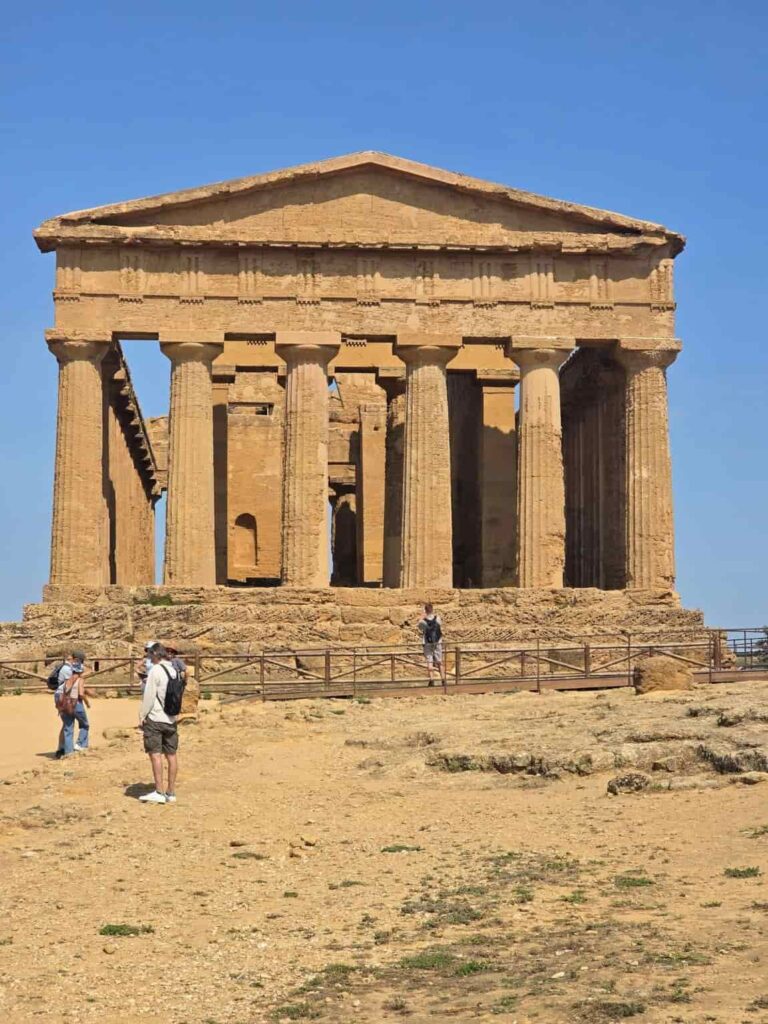
Where is the Valley of the Temples?
The Valley is just outside Agrigento, a hillside town with its own charming streets and Baroque churches. It’s located about 2 hours from Palermo and roughly 2.5 hours from Catania, making it an easy and worthwhile day trip from either city. Daily tours run from Palermo and Catania, like the Agrigento and the Valley of the Temples Day Tour from Palermo and the Valley of the Temples and Turkish Steps with Snack from Catania.
A Brief History of Agrigento and the Valley of the Temples
The Valley of the Temples in Agrigento dates back to 580 BCE when the ancient Greek city of Akragas was founded by settlers from Gela.
Akragas quickly became one of the richest and most powerful cities in the Mediterranean. Its golden age came after a major victory over the Carthaginians at the Battle of Himera in 480 BCE. Flush with wealth, the city built enormous temples to honor gods like Zeus, Hercules, Juno, and Concordia. These temples, made from local limestone, were built in the Doric style and symbolized both devotion and civic pride.
The most iconic is the Temple of Concordia, one of the best-preserved ancient Greek temples in the world. The Temple of the Olympian Zeus was designed to be the largest Doric temple ever built, featuring massive Telamon statues as supports, though it was never completed.
In 406 BCE, Akragas was sacked by the Carthaginians and never fully recovered. The Romans took over in 210 BCE, renaming it Agrigentum and converting some temples into Christian churches, preserving them in the process. The Temple of Concordia survived thanks to its transformation into a basilica in the 6th century.
Over the centuries, the city passed through the hands of the Byzantines, Arabs, and Normans. Earthquakes, looting, and neglect destroyed much of the ancient city, but the temples endured.
In the 18th and 19th centuries, European archaeologists revived interest in the site.
British naval officer Alexander Hardcastle helped restore many ruins in the early 20th century; his home, Villa Aurea, is now part of the park.
The Valley of the Temples Archaeological Park now spans over 1,300 hectares. It was declared a UNESCO World Heritage Site in 1997. The site preserves more than temples—it includes ancient walls, Christian necropolises, aqueducts, and sanctuaries. Today, it’s a place where history feels alive, with monuments still standing where Greek architects raised them 2,500 years ago. The Valley tells the story of Sicily’s layered past, from Greek grandeur to Roman rule and beyond.
Exploring the Park: Eastern and Western Zones
The park is divided into two main zones—Eastern and Western—each with its own highlights.
Eastern Zone: The Temples of Concordia, Juno, and Heracles
The Eastern Zone is where the best-preserved temples of the Valley stand in almost surreal condition. Here you’ll find the Temple of Concordia, the Temple of Juno (Hera), and the Temple of Hercules (Heracles).
1. Temple of Concordia
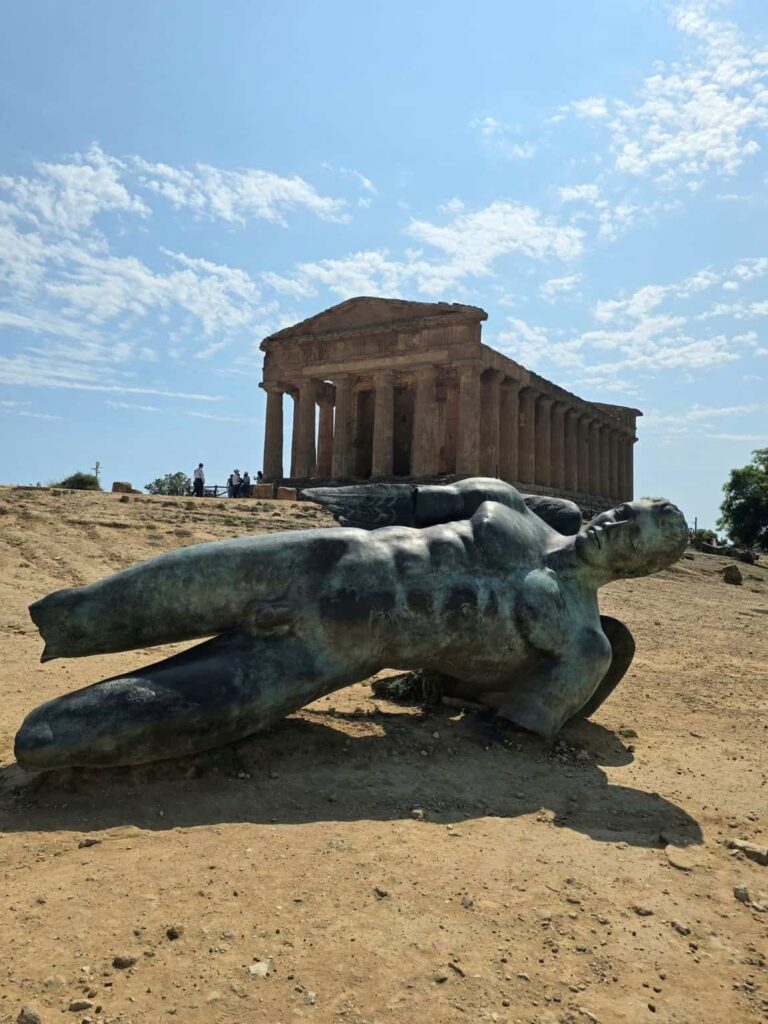
The Temple of Concordia is the star. Built around 440 BC, it’s one of the best-preserved Greek temples anywhere in the world, standing nearly complete with 34 majestic columns still in place.
Its name, “Concordia,” was given in the 18th century, though we don’t actually know which deity it was originally dedicated to. Its preservation is due largely to its conversion into a Christian church in the 6th century, which protected it from destruction.
A modern bronze statue of Icarus (made by the Polish sculptor Igor Mitoraj) with wings outstretched and fallen, lies dramatically before the temple—a nod to myth and mortality that adds a moving counterpoint to the eternal lines of the ancient stone.
2. Temple of Juno (Hera)
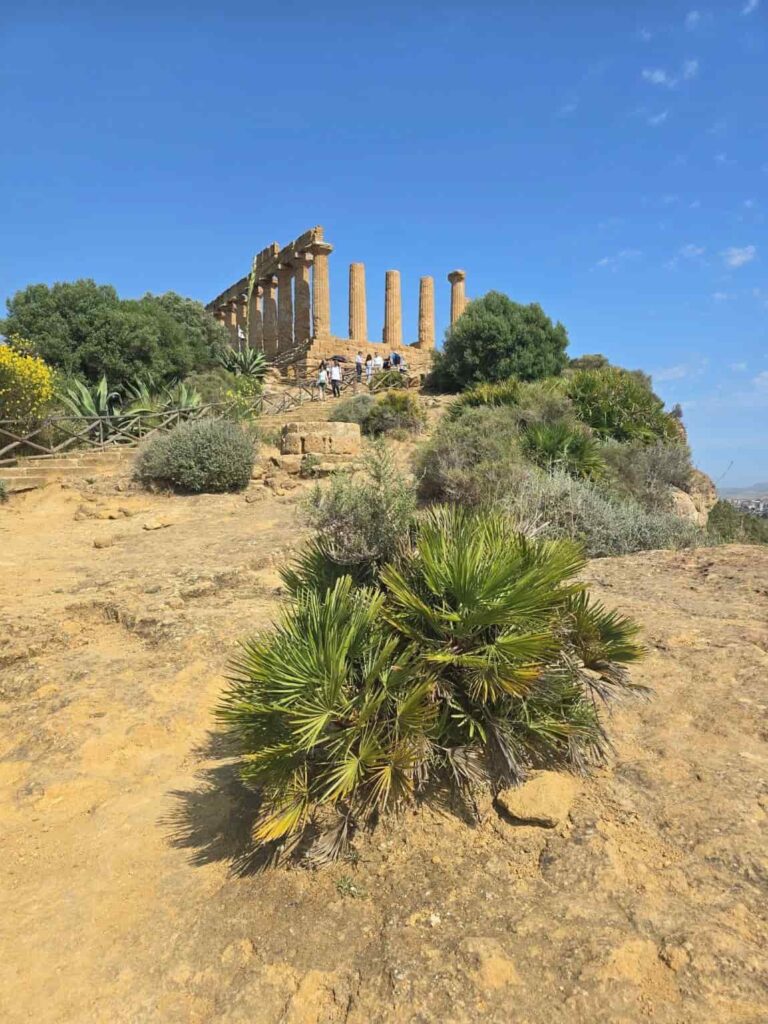
Perched dramatically at the easternmost point of the ridge, the Temple of Juno (also called Hera) commands spectacular views over the valley and down to the sea. Built around 450 BC, it was likely damaged by fire during the Carthaginian invasion in 406 BC, but much of its structure remains.
This temple is especially atmospheric at sunset when the golden light washes over the stones and the breeze stirs the olive trees. Its high altar and surviving columns speak of rituals long gone, of a time when offerings were made to secure divine favor.
Juno was the goddess of marriage and protector of the state—perhaps fitting for a temple that has watched over this land for so many centuries.
3. Temple of Heracles
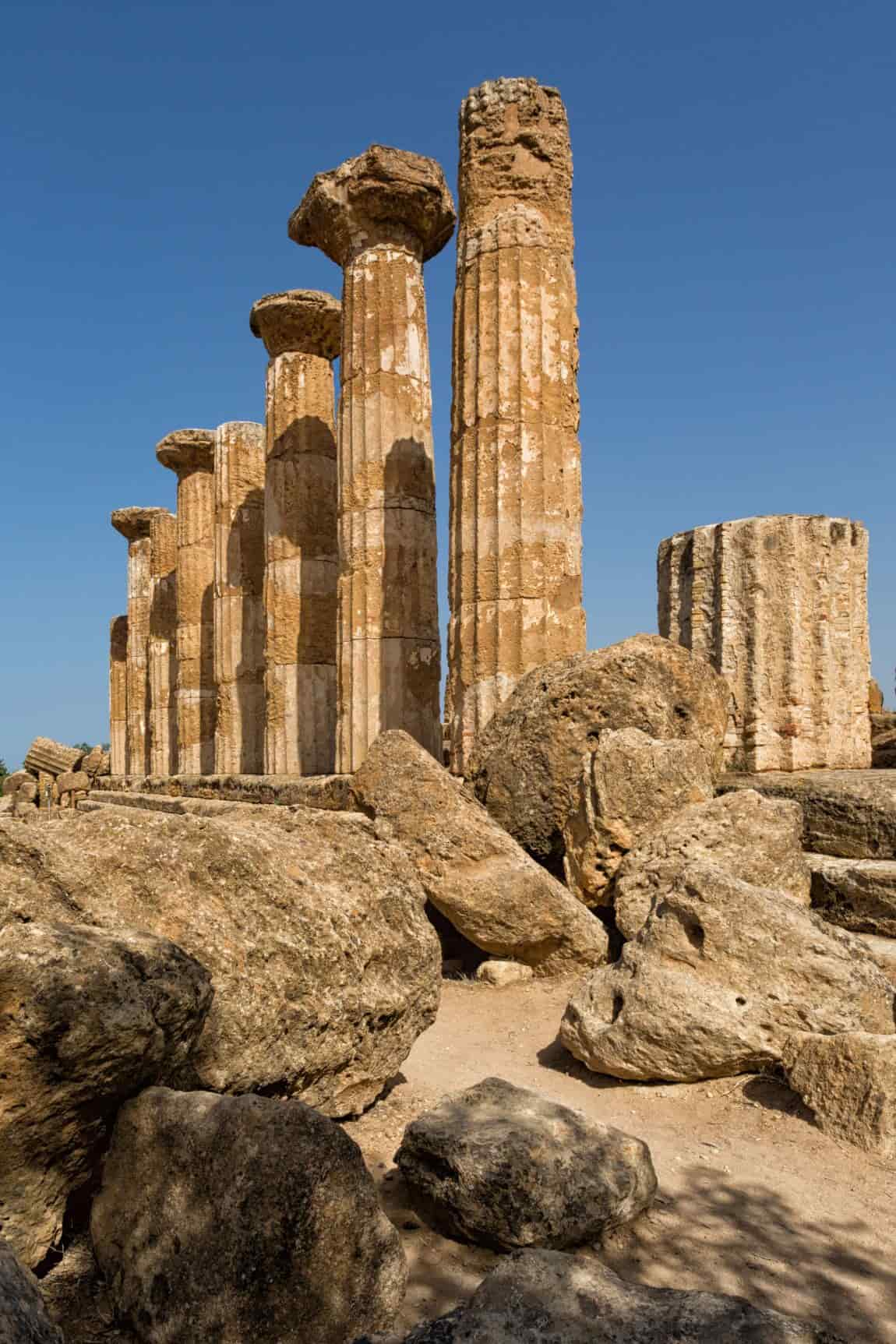
Continue your journey along the Valley of the Temples and you’ll encounter the Temple of Heracles (Hercules), the oldest of the temples, dating to the late 6th century BC. Though time and earthquakes have taken their toll, eight proud columns still stand, giving us a glimpse into its former magnificence.
Heracles was a heroic figure for the Greeks, known for his strength and courage—qualities that seem echoed in the solid Doric architecture. According to ancient sources, the temple was once the site of religious festivals and sacrifices.
There’s a kind of rugged nobility to this site. Less perfect than Concordia, but rich with age and atmosphere.
Western Zone: Ruins and Myth
The Western zone is more fragmented but no less fascinating. The main sites in the Western Zone are the Temple of the Dioscuri, the Temple of Olympian Zeus, the Paleo-Christian Necropolises, and Villa Aurea.
4. Temple of the Dioscuri – Agrigento’s Romantic Symbol
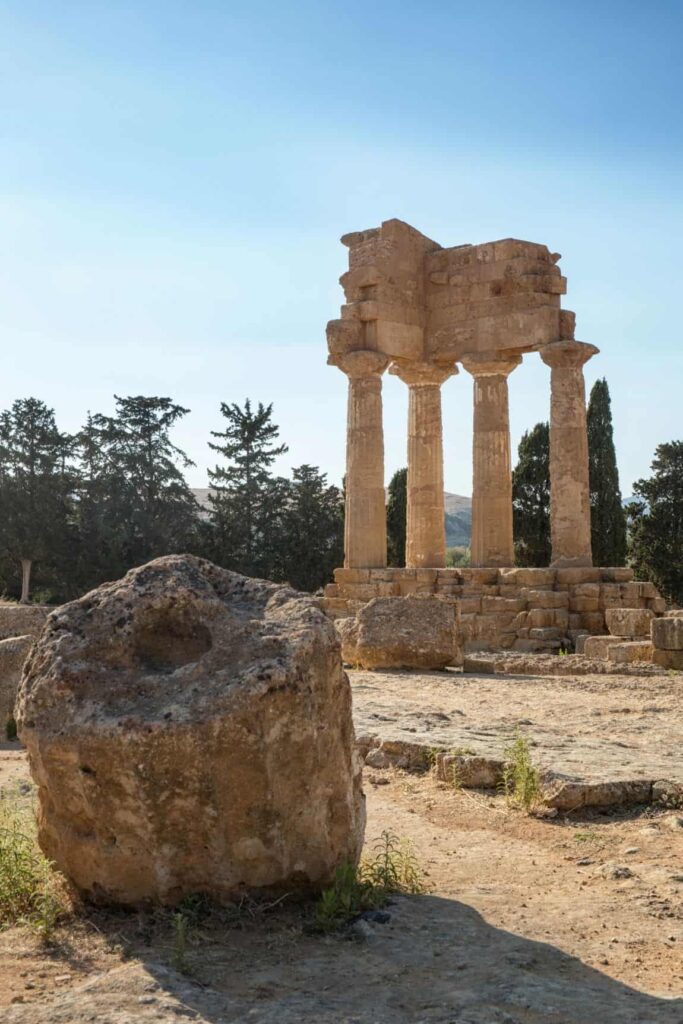
Only a corner remains of the Temple of the Dioscuri—just four reconstructed columns and a bit of entablature. Yet this ruin, restored in the 19th century using fragments from various temples, has become one of Agrigento’s most recognized images.
The Dioscuri—Castor and Pollux, twin brothers of myth—were symbols of protection and loyalty. While the original temple dates to the 5th century BC, what we see today is more symbolic than authentic. Still, it is undeniably picturesque.
Surrounded by the ruins of altars and shrines, it has a quiet poetry to it—especially when caught in the soft light of dawn or dusk.
5. Temple of Olympian Zeus – A Colossus Fallen
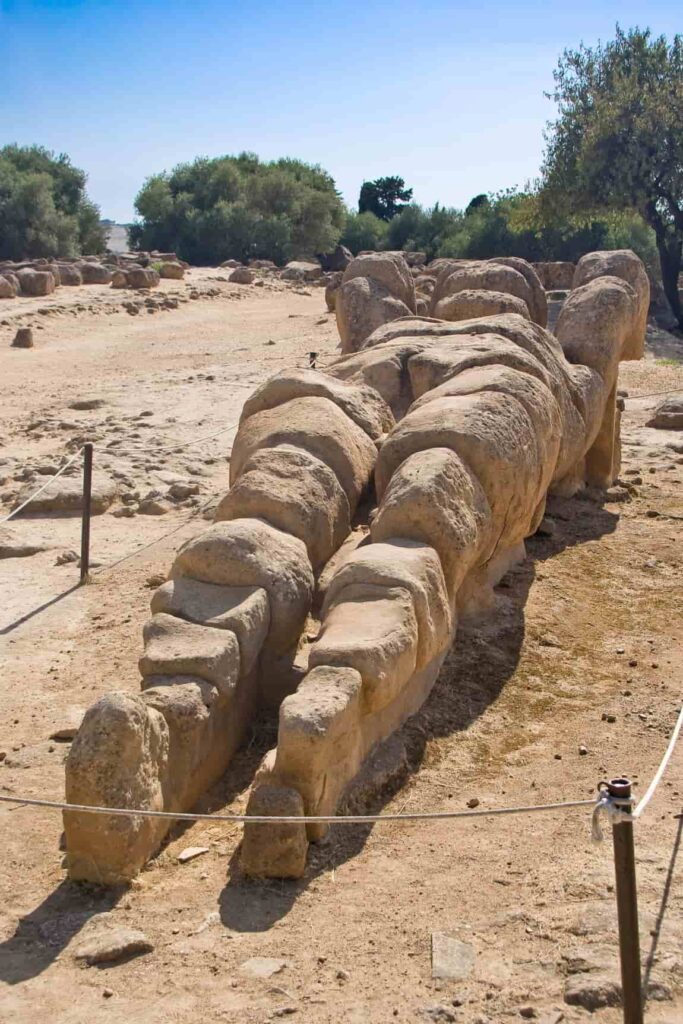
In the Western Zone lies the most ambitious of all: the Temple of Olympian Zeus. Begun around 480 BC after the Greek victory over the Carthaginians at Himera, it was meant to be a statement of power and divine favor.
Had it ever been completed, it would have been among the largest Doric temples ever built—each column over 17 meters tall. Instead of typical fluted columns, it featured giant Telamon figures, human-shaped columns that supported the entablature. One of these colossal statues has been reconstructed and lies on the ground, giving a sense of the temple’s extraordinary scale.
Today, the temple lies in ruins, having been damaged by earthquakes and plundered for building materials in later centuries. But the vast footprint and scattered fragments are awe-inspiring, evoking a lost grandeur that once made Akragas a jewel of Magna Graecia.
6. Paleo-Christian Necropolises – The Valley of the Dead
Beyond the temples, the Valley also holds remnants from a different time and a different faith. The Paleo-Christian Necropolises, located mostly in the Western Zone, offer a fascinating window into the later history of the site.
These are not grand structures, but simple, somber tombs carved into the rock—hypogea, burial niches, and arched recesses known as arcosolia. Dating to the Roman and early Christian periods, they show how this once-pagan sacred ground was re-used as a burial site for centuries.
Walking among these quiet stones adds another layer to the story of the Valley: a reminder of the many civilizations that have passed through and left their mark.
7. Villa Aurea – The Alexander Hardcastle Villa
Set among gardens and cypress trees near the Western Zone, the Villa Aurea is an elegant 19th-century residence with a story all its own. It once belonged to Alexander Hardcastle, an English naval officer turned archaeologist, who devoted his fortune to the excavation and preservation of the Valley in the early 20th century.
Today, the villa is used for exhibitions and cultural events, and its grounds offer a peaceful place to sit and reflect after exploring the ruins. It’s also a testament to the modern efforts that brought the Valley’s lost beauty back to light.
What Else to See in the Valley of the Temples Archeological Park
Aside from temples, there’s plenty more to explore:
8. Kolymbethra Garden – A Hidden Paradise
The Kolymbethra Garden is a lush green oasis in the heart of the ruins, with citrus trees, olive groves, and shaded paths—perfect for a break.
Once a massive water reservoir created by the Greeks—probably engineered by slaves captured during war—it later fell into disuse, and over time, nature reclaimed it. Today, it’s a botanical treasure managed by the FAI (Italian Environmental Fund). Wandering through this shaded oasis, you’ll find citrus groves, almond trees, fig bushes, and centuries-old irrigation systems still in use. The garden is alive with birdsong and the scent of orange blossoms. A visit here offers a moment of calm and connection with the land, where nature and history blend seamlessly. There is a separate ticket only for the Kolymbethra Garden. You can book it online in advance here.
9. Pietro Griffo Archaeological Museum
The Pietro Griffo Archaeological Museum, located nearby, houses over 5,000 artifacts excavated from the site, including pottery, coins, statues, inscriptions, and the original full-scale Telamon from the Temple of Zeus. The Telamon next to the Temple of Zeus is a replica. The museum also offers insightful displays about the daily life, art, and religion of ancient Akragas.
For anyone truly curious about the ancient city and its people, the museum is not just an optional extra—it’s essential. It’s a must-visit to put the ruins into context.
10. Ekklesiasterion – The Assembly of All Free Citizens
Hidden within the landscape near the museum and in front of the late Hellenistic temple known as “Oratory of Phalaris”, the Ekklesiasterion is one of the Valley’s most fascinating yet often-overlooked sites. This was not a temple, but a civic space—a theatre-shaped semi-circular assembly area where citizens of Akragas would gather to debate, vote, and participate in democratic life.
Cut directly into the rock and capable of seating over 3,000 people, the Ekklesiasterion reveals another side of ancient society: not divine ritual, but civic duty. It was here that the people’s voices shaped law and policy, echoing through the stone tiers.
In later centuries, the structure was converted into a Christian basilica, adding yet another chapter to its long and layered history. Standing here, you feel the power of public life—the sense that in this city of temples, the people themselves were part of something sacred.
When to Visit the Valley of the Temples
The best times to visit are spring (April–June) and fall (September–October) when the weather is warm but not scorching. In summer, aim for early morning or sunset to avoid the heat and crowds—and for the most magical golden light.
How Much Time to Spend Visiting the Valley of the Temples
You’ll want to spend at least 3–4 hours here, more if you plan to visit the museum or take a guided tour. Some people spend an entire day just wandering and soaking it all in.
Getting To Agrigento and the Valley of the Temples
You can reach Agrigento by bus from both Palermo and Catania. Agrigento is roughly 2 hours from Palermo by bus or train. Agrigento is also about 2 hours and 40 minutes by bus from Catania.
From Agrigento town, the Valley is just a short drive or taxi ride (10 minutes). You can also take local buses (bus No 1 to Porta V, the Western Entrance to the Valley of the Temples, or bus No 2 to the Eastern Entrance) that stop near the archaeological entrances. Tickets cost €1.70 if purchased on board.
Once inside, getting around is easy thanks to the Strada Panoramica, a paved road that connects the two main entrances. A shuttle bus service with four stops helps you navigate the park without retracing your steps.
Getting Around the Valley of the Temples
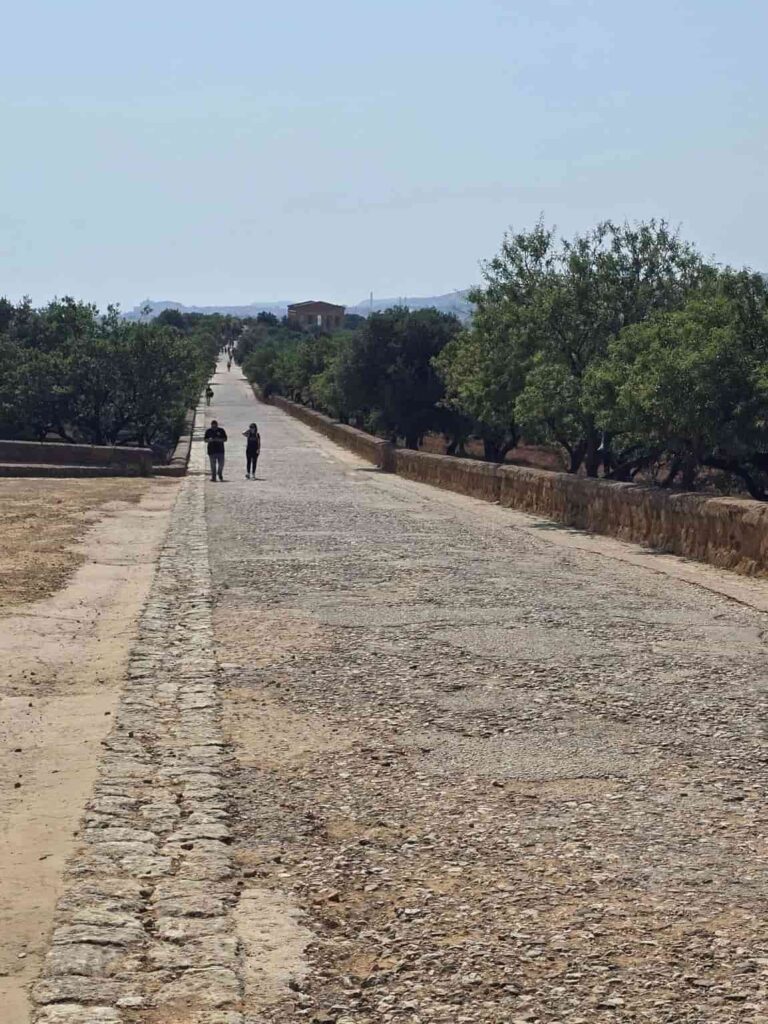
There are two entrances to the Valley of the Temples: Porta Giunone (Juno Gate) – the entrance to the Eastern Zone, and Porta V (Gate V) – the entrance to the Western Zone. Most people like to start their visit to the Valley of the Temples at Porta Giunone and go downhill toward the exit to Porta V.
Visitors can walk about 2 km from one gate to another. The park runs along a long ridge, so to avoid backtracking, take the Strada Panoramica. I recommend taking a shuttle bus for €3 that runs between the entrances with four stops along the way. It’s especially helpful in the heat and allows you to see both zones without walking the entire distance twice.
The Walking Route of The Valley of the Temples
Guided Tours Worth Booking
A guided tour adds so much to the experience—stories, myths, and insight that truly bring the ruins to life.
I recommend:
- Agrigento & Piazza Armerina Day Trip from Catania (full-day tour, Viator)
- Agrigento and Valley of the Temples Day Trip from Palermo (full-day tour, Viator)
- Valley of the Temples + Villa Romana del Casale from Palermo (full-day tour, Viator)
You can also book skip-the-line access, audioguides, or sunset tours, which are breathtaking and well worth the splurge.
The Valley of the Temples: Tickets and Opening Hours
- Full ticket: €17
- Park + Museum combo: €22.20
- Park + Kolymbethra Gardens: €23
- Pietro Griffo Museum only: €10
Opening hours vary slightly, but the park is generally open 8:30 AM to 7:00 PM, with extended evening hours in summer. I recommend buying tickets online in advance, especially in high season.
Check out:
Agrigento: Valley of the Temples Ticket & App Audioguide
Valley of the Temples Premium Guided Tour
Skip-the-Line Sunset Tour for golden hour magic
Where to Stay Near the Valley
Luxury: Villa Athena Hotel – A five-star hotel within the park itself, with views of the Temple of Concordia from your window.
Mid-range: Hotel Della Valle – Elegant rooms, a garden, and a pool, just minutes from the ruins.
Budget: B&B Agorà – Simple, cozy, and close to both the town and the park.
Tips for Visiting
- Wear comfortable shoes—the paths are uneven and it’s a lot of walking.
- Bring water and sunscreen, especially in summer.
- Go early or late for the best light and smallest crowds.
- Allow extra time for the museum—it’s excellent.
- Don’t skip Kolymbethra Garden—it’s a hidden gem.
Places to Visit Nearby
After the Valley of the Temples, head into Agrigento’s old town (1.7 km away) for a stroll, or visit the Scala dei Turchi (12 km away), a white limestone cliff that cascades into the sea—perfect for a sunset dip (Read more: The Complete Guide to Scala dei Turchi, Sicily!).
You can also combine your trip with a visit to the Villa Romana del Casale (106 km away) in Piazza Armerina to see jaw-dropping Roman mosaics. Read more: A Complete Guide to Visiting Villa Romana del Casale
Final Thoughts on Visiting the Valley of the Temples
Visiting the Valley of the Temples is not just a highlight of Sicily—it’s one of the most unforgettable travel experiences in all of Italy. You walk through history, beauty, and myth all at once. Whether you’re a history buff, a photographer, or just someone who wants to feel the weight of time beneath your feet, the Valley of the Temples is the place to go.
If you’re heading to Sicily, don’t just check the Valley of the Temples off your list—savor it.
YOU MIGHT ALSO ENJOY:
- The Ultimate Guide to Selinunte Sicily
- Segesta Sicily: Why This Ancient Temple Is the Most Magical Place You’ve Never Heard Of
- 17 Unmissable Things to Do in Trapani, Sicily
- Cefalu Sicily: The Ultimate Guide to Sicily’s Dreamiest Seaside Town
- 13 Bucket List Things to Do in Erice, Sicily
- A Perfect 2 Day Palermo Itinerary
- How To Spend One Perfect Day in Palermo, Sicily
- A Complete Guide to Modica, Sicily
- Venice Carnival 2026 Is Calling: January 31–February 17 — Reserve Your Calendar Now - January 7, 2026
- The Most Luxurious Secret Castle Hotels in Italy: Romantic Escapes You Won’t Believe You Can Stay In - November 14, 2025
- Vienna, Where Time Waltzes — The Most Magical Things to Do in Vienna, Austria - November 8, 2025



